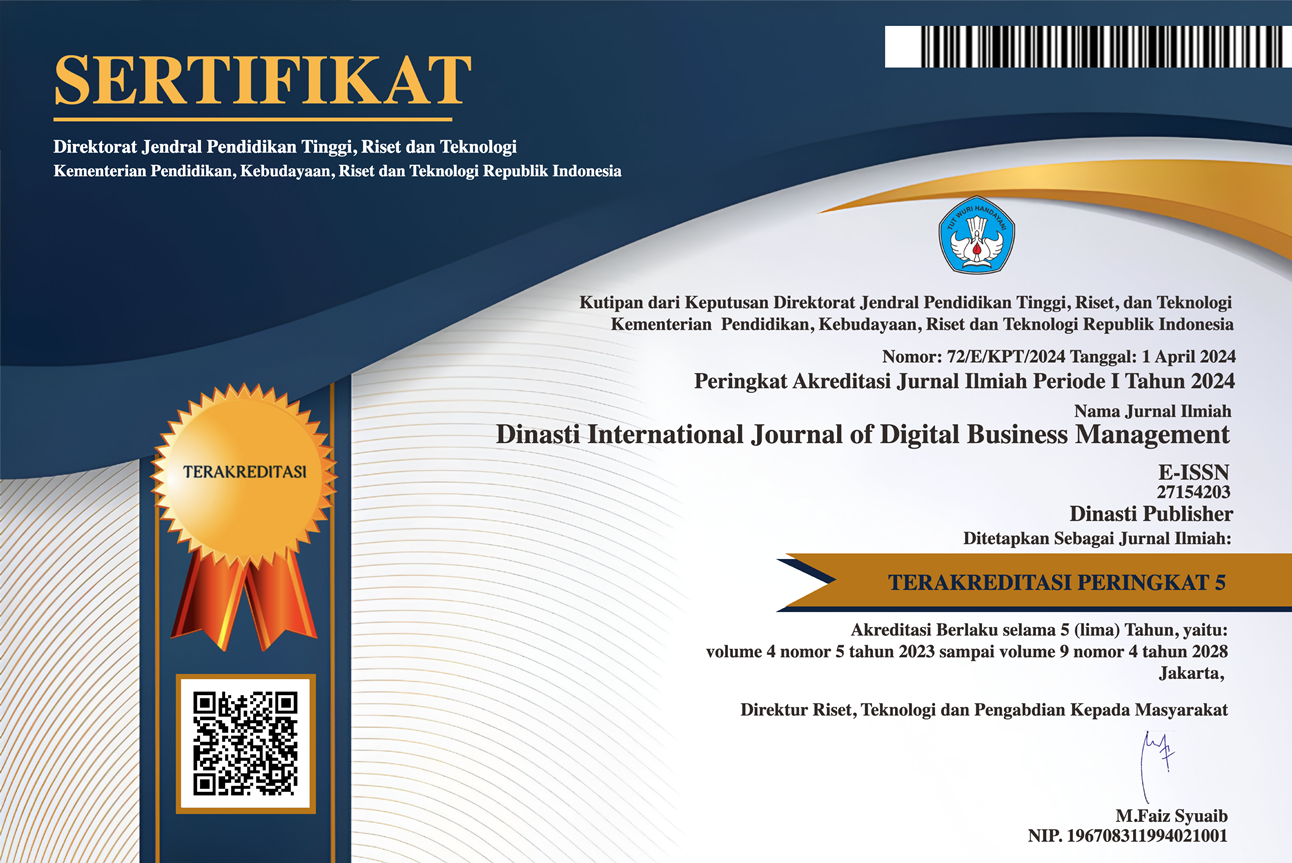Factors that Influence the Purchase Intention of Luxury Fashion
DOI:
https://doi.org/10.31933/dijdbm.v5i2.2258Keywords:
Emotional Aspect, Rational Aspect, Luxury Fashion, Purchase IntentionAbstract
Abstract: Sales of luxury fashion are growing rapidly in Indonesia. Competition from well-known brands is tight, so a separate strategy is needed to build interest in buying this luxury fashion. Consumer behavior in buying luxury goods has its uniqueness, the same thing also happens in interest in purchasing luxury fashion. Consumer purchase intention is influenced by emotional and rational aspects. The main purpose of this research is to formulate the strategy to develop costumer purchase intention of luxury fashion. This research conveys the influence of emotional aspects, namely the influence of brands, experiences, and hedonic behavior, and the influence of rational aspects which include product quality, price, and information, in influencing consumer buying interest in luxury fashion. The research is a quantitative study involving 125 consumers with the criteria of having purchased luxury fashion. The research results show that hedonic behavior, price, and information do not significantly influence consumer buying interest, while product quality, experience, and brand significantly influence consumer buying interest.
References
Boardman, R., and Mccormick, H. (2021). Attention and behaviour on fashion retail doi: 10.1108/ITP-08-2020-0580
Cakici, A. C., Akgunduz, Y., & Yildirim, O. (2019). The impact of perceived price justice and satisfaction on loyalty: the mediating effect of revisit intention, Tourism Review, 74(3), 443–462. https://doi.org/10.1108/TR-02-2018-0025
De Giovanni, P., & Zaccour, G. (2023). A survey of dynamic models of product quality. European Journal of Operational Research, 307(3), 991–1007. https://doi.org/10.1016/j.ejor.2022.06.010
Dubois, D. (2020). Fulfilling social needs through luxury consumption. Research Handbook on Luxury Branding, 75–91.
Duman, T., Ozbal, O., & Duerod, M. (2018). The role of affective factors on brand resonance: Measuring customer?based brand equity for the Sarajevo brand. Journal of Destination Marketing and Management, https://doi.org/10.1016/j.jdmm.2017.08.001
Esmaeilpour, M., Mohseni, Z. (2019). Effect of Customer Experiences on Customer Puchase Intention, The Romanian Economic Journal, XXII (73)
Farrag, (2017). "The young luxury consumer in Qatar". Young Consumers, 18(4), pp.393-407
Guo, J., Wang, X., and Wu, Y. (2020). Positive emotion bias: role of emotional content from online customer reviews in purchase decisions. J. Retail. Consum. Serv. 52:101891. doi: 10.1016/j.jretconser.2019.101891
Hair, J.F., Risher, J., Sarstedt, M. and Ringle, CM. (2019). When to use and how to report the results of PLS-SEM. European Business Review, 31(1), 2–24
Keni Keni, Teoh Ai Ping, Vincent Vincent, Wulan Purnama Sari, (2022). Luxury Brand Perception, Social Influence, and Brand Personality to Predict Purchase Intention, Jurnal Komunikasi ISSN 2085-1979, EISSN 2528-2727 Vol. 14, No. 1
Li, H., Fei, G., Wang, S., Liu, B., Shao, W., Mukherjee, A., & Shao, J. (2017). Bimodal distribution and co-bursting in review spam detection. In Proceedings of the 26th international conference on world wide web (pp. 1063–1072).
Menon, B. (2017). Determining Factors of Brand Attitude Towards Private Label Fashion Wear. Journal of Management Research (09725814), 17(4), 232-243
Mousa, M. M. (2019). The Factors Affecting Luxury Brand Purchase Intention in Terms of Rational and Emotional Impact in Qatar, Journal of Business Research-Turk, 11 (3), 2191-2204.
Nardini, G., Lutz, R.J. (2018). How Mental Simulation evokes negative affective Mis-forecasting of Hedonic Experiences, Journal of Customer Marketing 35(6), DOI:10.1108/JCM-07-2017-2291
Nyadzayo, M. W., Johnson, L. W., & Rossi, M. (2020). Drivers and outcomes of brand engagement in self-concept for luxury fashion brands. Journal of Fashion Marketing and Management: And International Journal, 24(4), 589–609
Philip Kotler, Kevin Lane Keller, A. C. (2021). Marketing Management (16th ed.). Pearson Education
Santo, P.E. and A.M.A. Marques. (2021). Determinants of the online purchase intention: Hedonic motivations, prices, information and trust. Baltic Journal of Management
Schallehn, H., Seuring, S., Strähle, J. & Freise, M. (2018). Customer experiencecreation for after-use products: A product–service systems-based review. Journal of Cleaner Production, 7 (1)
Stanciu A. Cristina and Condrea Elena, (2018). The Quality of Luxury versus the Luxury of Quality, Ovidius Annals, Economic Sciences Series,Volume XVIII, Issue 1
Statista, (2023). Luxury Fashion – Indonesia, htps://www.statista.com/outlook/cmo/luxury-goods/luxury-fashion/Indonesia (download January, 2, 2024)
Teah, K., Sung, B., & Phau, I. (2023). Examining the moderating role of principle-based entity of luxury brands and its effects on perceived CSR motives, consumer situational scepticism and brand resonance. Journal of Fashion Marketing and Management. https://doi.org/10.1108/JFMM-03-2022-0066
Wang, Y. (2022). A conceptual framework of contemporary luxury consumption, International Journal of Research in Marketing
Wilcox, K., & Zaichkowsky, J. L. (2020). The evolution of counterfeit luxury consumption. Research Handbook on Luxury Branding, 265–281
Downloads
Published
Issue
Section
License
Copyright (c) 2024 Dipa Mulia, Salsabila Asyifa

This work is licensed under a Creative Commons Attribution 4.0 International License.
Authors who publish their manuscripts in this journal agree to the following conditions:
- The copyright on each article belongs to the author(s).
- The author acknowledges that the Dinasti International Journal of Digital Business Management (DIJDBM) has the right to be the first to publish with a Creative Commons Attribution 4.0 International license (Attribution 4.0 International (CC BY 4.0).
- Authors can submit articles separately, arrange for the non-exclusive distribution of manuscripts that have been published in this journal into other versions (e.g., sent to the author's institutional repository, publication into books, etc.), by acknowledging that the manuscript has been published for the first time in the Dinasti International Journal of Digital Business Management (DIJDBM).















































